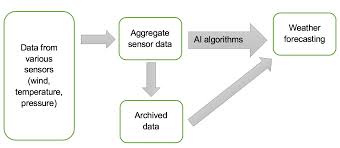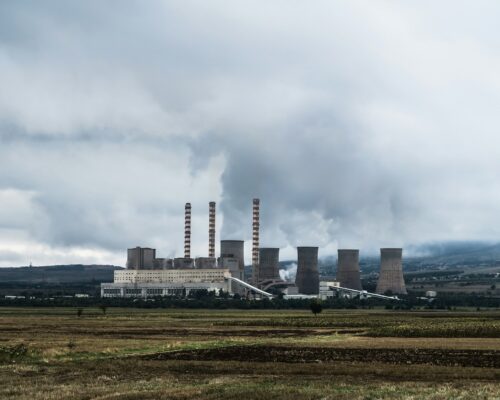Mission Mausam: Why Is It Needed and Will It Be Successful?
Source: The Environment
14 November 2024 – by Eric Koons
Mission Mausam is India’s initiative to revolutionise weather forecasting and research using advanced technologies. This is a critical program as climate change increases weather unpredictability and intensifies extreme weather events. Countries across Asia face growing challenges and increasing social and financial ramifications from climate impacts.
What Is Mission Mausam?
Mission Mausam is a program launched by India to bolster the nation’s weather forecasting and meteorological laboratory infrastructure. The mission has a budget of USD 237 million and will run from 2024-2026. It will enhance forecasting accuracy, provide near real-time local weather forecasts and research the development of weather management technologies.
Just predicting weather is not enough; managing it is more important.
At the core of Mission Mausam is the deployment of advanced tools, such as satellite systems, devices utilising the internet of things, artificial intelligence (AI) and machine learning (ML) algorithms for the processing of vast amounts of meteorological data.

The process of using AI for weather forecasting. Source: Allerin
By leveraging these technologies, the program aims to refine data collection and analysis to improve the spatial and temporal accuracy of forecasting and to help address the challenges posed by climate change.
Useful for The National Centre for Medium Range Weather Forecasting and The India Meteorological Department
Mission Mausam will provide a major upgrade of instruments used by the National Centre for Medium Range Weather Forecasting, the Indian Institute of Tropical Meteorology (IITM) and the India Meteorological Department.
The Need for Mission Mausam
India’s vast geographical diversity and complex climatic patterns present significant challenges for accurate weather forecasting and climate preparedness.
Forecasting
The current network of weather observation stations consists of about 800 automatic weather stations, 1,500 automatic rain gauges and 37 Doppler weather stations. This provides weather forecasts at a 12-km spatial resolution, which is insufficient to capture local weather events and creates time gaps in data collection.
Agriculture
This inadequacy impacts critical sectors like agriculture. Agriculture employs around 45% of India’s workforce and farmers rely heavily on timely weather forecasts for crop planning and protection. Unpredictable weather can lead to crop failures, threatening food security and livelihoods.
Extreme Weather Events
Furthermore, climate change increases the chance for local shifts in weather patterns and more intense extreme weather events. Between 2019 and 2023, extreme weather affected around 54 million people in India and caused losses exceeding USD 56 billion. These costs are expected to increase as climate change intensifies.
Objectives of Mission Mausam
Enhancing Forecast Accuracy and Frequency
The mission aims to improve the accuracy of weather forecasts by increasing the spatial and temporal resolution of observational data. With the addition of new infrastructure, including 120 new weather stations, data density will significantly improve, allowing meteorologists to capture microclimatic variations. The goal is to achieve a forecast accuracy improvement of at least 5-10%, increase short-term weather predictions from every three hours to hourly and provide village-level forecasts with a 10-15 day lead time.
Climate Resilience and Early Warning Systems
By providing real-time data, Mission Mausam enhances early warning systems for extreme weather events. This is crucial for timely evacuations and preparedness measures, potentially saving lives and reducing economic losses. Enhanced early warning systems are particularly important for cyclone-prone coastal regions and flood-prone river basins. According to the United Nations, effective early warning systems can reduce disaster-related losses by up to 30%.
Meteorological Research
The mission will also develop an urban test bed, an ocean research station and a process test bed to increase the Indian government’s meteorological research capabilities. One of the projects that the new research facilities will work on is artificially creating clouds. In the long term, this may help the country adapt to the increasingly prevalent droughts and heat waves it experiences.
Will This Mission Be Successful?
Given the strategic initiatives and substantial investments by the Indian government, the success of Mission Mausam holds significant promise. Furthermore, the government has acknowledged that it is a critical program.
The country gets one-third of its GDP from sectors that are reliant on nature and vulnerable to climate change. This could cost the country 10% of its national income by 2100 and push 50 million people back into poverty. Improving climate resiliency through programs like Mission Mausam is critical to mitigating these risks.
Potential Challenges
Despite the necessity of the program, there are challenges that can impede its success. Maintaining and servicing equipment in remote areas – where the country’s road infrastructure is poor – poses logistical hurdles. Furthermore, the surge in data volume requires ongoing development of robust IT infrastructure. Lastly, a shortage of skilled experts in fields like data science, meteorology and atmospheric research could limit effective data processing and accurate forecasting.
However, the country can reduce the impact of these concerns by proactively addressing potential obstacles through education, infrastructure investment and international collaboration.
Paving the Way Toward Climate Resilience and Sustainability
Mission Mausam represents a transformative step in India’s efforts to enhance weather forecasting capabilities, with significant implications for climate resiliency and sustainability. Continued collaboration between government agencies, industry stakeholders and international partners will be crucial to overcoming challenges and ensuring the mission’s success.
Ultimately, Mission Mausam is critical for the country and is being watched by the international community. The country is at a crossroads where climate change impacts are noticeably increasing, yet climate adaptation and mitigation policies are seen as lacklustre. Mission Mausam represents a positive step towards climate resiliency and is hopefully a sign of more climate-focused programs to come.
by Eric Koons
Eric is a passionate environmental advocate that believes renewable energy is a key piece in meeting the world’s growing energy demands. He received an environmental science degree from the University of California and has worked to promote environmentally and socially sustainable practices since. Eric’s expertise extends across the environmental field, yet he maintains a strong focus on renewable energy. His work has been featured by leading environmental organizations, such as World Resources Institute and Hitachi ABB Power Grids.
Read more




